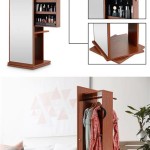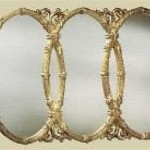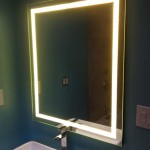Do Modern Mirrors Have Silver? The Science and Manufacturing Behind Reflection
Mirrors, ubiquitous objects found in homes, businesses, and public spaces, serve a fundamental purpose: to reflect light and provide a visual representation of our surroundings. The clarity and fidelity of this reflection are determined by the reflective material used in their construction. While historical mirrors often relied on various metals, including silver, the composition of modern mirrors requires a closer examination.
Understanding the construction of a modern mirror involves several layers. The most critical layer is the reflective coating, which is responsible for bouncing light back towards the viewer. This coating is typically applied to a substrate, most commonly glass, to provide structural support and a smooth, even surface. The reflective layer needs protection from abrasion, oxidation, and other environmental factors that could degrade its reflective properties over time. A protective backing, typically consisting of one or more layers of paint, is applied to shield the reflective layer from damage.
The question of whether modern mirrors "have silver" is not a simple yes or no. While silver remains a highly effective reflective material, its use in contemporary mirror manufacturing is more nuanced due to factors such as cost, durability, and environmental considerations.
Silver as a Reflective Material: Its Advantages and Disadvantages
Silver possesses exceptional reflective properties across the visible light spectrum, making it an ideal candidate for creating high-quality mirrors. Its high reflectivity contributes to a bright and accurate reflection, minimizing distortion and color alteration. This explains why silver was historically the preferred material for producing mirrors intended for scientific instruments and applications demanding precise optical performance.
However, silver is not without its drawbacks. The primary concern is its susceptibility to tarnishing. When exposed to air and moisture, silver reacts with sulfur compounds present in the environment, forming silver sulfide, a dark, dull layer that reduces reflectivity. This tarnishing process requires regular cleaning and maintenance to preserve the mirror's reflective qualities. In addition, silver is a relatively expensive metal, adding to the overall cost of mirror production.
The high cost of silver, coupled with its vulnerability to tarnishing, prompted the exploration of alternative reflective materials that could offer similar performance at a lower cost and with improved durability. This led to the adoption of aluminum as a primary reflective material in many modern mirror manufacturing processes.
The Rise of Aluminum: A Cost-Effective and Durable Alternative
Aluminum is a readily available and relatively inexpensive metal, making it an attractive substitute for silver in mirror production. It also boasts excellent reflectivity, although slightly lower than that of silver, particularly in the blue and ultraviolet portions of the spectrum. However, the difference in reflectivity is often negligible to the human eye, especially in typical indoor lighting conditions.
One of the major advantages of aluminum is its resistance to tarnishing. Aluminum forms a thin, transparent layer of aluminum oxide on its surface when exposed to air. This oxide layer is self-passivating, meaning it acts as a barrier, preventing further oxidation and protecting the underlying aluminum from corrosion. This inherent corrosion resistance significantly enhances the lifespan and durability of aluminum-backed mirrors compared to their silver counterparts.
The manufacturing process for aluminum mirrors is also typically more efficient and less complex than that for silver mirrors, contributing to lower production costs. Aluminum is typically applied to the glass substrate using vacuum deposition techniques, such as sputtering or evaporation. These methods create a thin, uniform layer of aluminum that adheres strongly to the glass surface. Subsequently, a protective backing is applied to shield the aluminum layer from scratches and other damage.
While aluminum mirrors have become the dominant choice in many applications due to their cost-effectiveness and durability, silver mirrors continue to be produced, particularly for specialized applications where superior reflectivity is paramount.
Modern Mirror Manufacturing: A Hybrid Approach and the Role of Silver
Despite the widespread adoption of aluminum as a primary reflective material, silver has not been completely abandoned in modern mirror manufacturing. In some cases, manufacturers employ a hybrid approach, utilizing a combination of silver and aluminum to optimize performance and cost. These hybrid mirrors may feature a thin layer of silver applied to the glass substrate, followed by a layer of aluminum to enhance durability and reduce cost. The thin layer of silver provides excellent initial reflectivity, while the aluminum layer protects the silver from tarnishing and degradation.
Furthermore, silver remains the preferred choice for specialized mirrors used in scientific instruments, optical devices, and high-end applications where maximum reflectivity is critical. These mirrors often undergo specialized coating processes to enhance their performance and durability. For example, silver mirrors may be coated with a dielectric overcoat to improve their reflectivity in specific wavelength ranges and protect the silver layer from environmental damage.
The modern mirror manufacturing process is highly automated and controlled, ensuring consistent quality and performance. Prior to the application of the reflective coating, the glass substrate undergoes thorough cleaning and surface preparation to ensure optimal adhesion. The reflective layer is then applied using vacuum deposition techniques, followed by the application of a protective backing. The finished mirrors are then inspected for defects and imperfections before being packaged and shipped.
The thickness of the reflective layer, whether it is silver or aluminum, is typically very thin, on the order of nanometers. This thin layer is sufficient to provide excellent reflectivity while minimizing the amount of material required, further reducing costs. The thickness and uniformity of the reflective layer are carefully controlled during the manufacturing process to ensure consistent performance across the entire mirror surface.
The choice between silver and aluminum for the reflective coating ultimately depends on the specific application and the desired balance between performance, cost, and durability. While aluminum has become the dominant choice for everyday mirrors due to its cost-effectiveness and resistance to tarnishing, silver continues to play a crucial role in specialized applications where superior reflectivity is required.
The evolution of mirror manufacturing reflects a continuous search for materials and processes that can deliver optimal performance at an affordable cost. While silver has historically been the material of choice for creating high-quality mirrors, the development of aluminum-based mirrors has revolutionized the industry, making mirrors more accessible and durable than ever before.
Advancements in coating technologies and materials science continue to drive innovation in mirror manufacturing. Researchers are exploring new materials and processes that can further enhance the reflectivity, durability, and cost-effectiveness of mirrors. These advancements could lead to the development of mirrors with even better performance and a wider range of applications.
The coatings used on modern mirrors extend beyond just the reflective layer and the protective backing. Anti-scratch coatings are often applied to the front surface of the glass to prevent damage from cleaning and handling. Anti-fog coatings are also available for bathroom mirrors, preventing condensation from obscuring the reflection. These specialized coatings can significantly enhance the functionality and longevity of mirrors.
The environmental impact of mirror manufacturing is also a growing concern. Manufacturers are increasingly adopting sustainable practices to reduce their environmental footprint. This includes using recycled glass, minimizing waste, and utilizing environmentally friendly coatings and processes. The use of aluminum, which is readily recyclable, also contributes to the sustainability of mirror production.

Almeria Silver Mirror Deknudt Mirrors Usi Maison

Large Modern Mirror In Silver Leaf Design Made Italy

Benjara Small Round Silver Modern Mirror 1 In H X 36 W Bm205992 The Home Depot

Silver Mirror Buy Nice Mirrors Here Bga Ie

Brandtworks Medium Rectangle Silver Modern Mirror 30 In H X 19 5 W Av26small The Home Depot

Stylewell Medium Modern Rectangular Silver Framed Mirror With Rounded Corners 22 In W X 32 H Al R2232s The Home Depot

Tetote 60 X 30 Inch Silver Vanity Mirror Brushed Nickel Rectangle Metal Framed Modern Mirrors For Bathroom Farmhouse Round Corner Wall Mounted Horizontal Vertical Com

Modern Silver Mirror Frames Wall Framing Mirrormate

Tetote Round Silver Bathroom Mirror 30 Inch Circle Mirrors For Vanity Modern Brushed Nickel Metal Framed Wall Mounted Farmhouse Decorative Entryway Shatterproof Com

Shyfoy 24 Inch Wall Mirrors Decorative Round Sunburst Mirror For Decor Modern Silver Glass Sf Wm054 60








